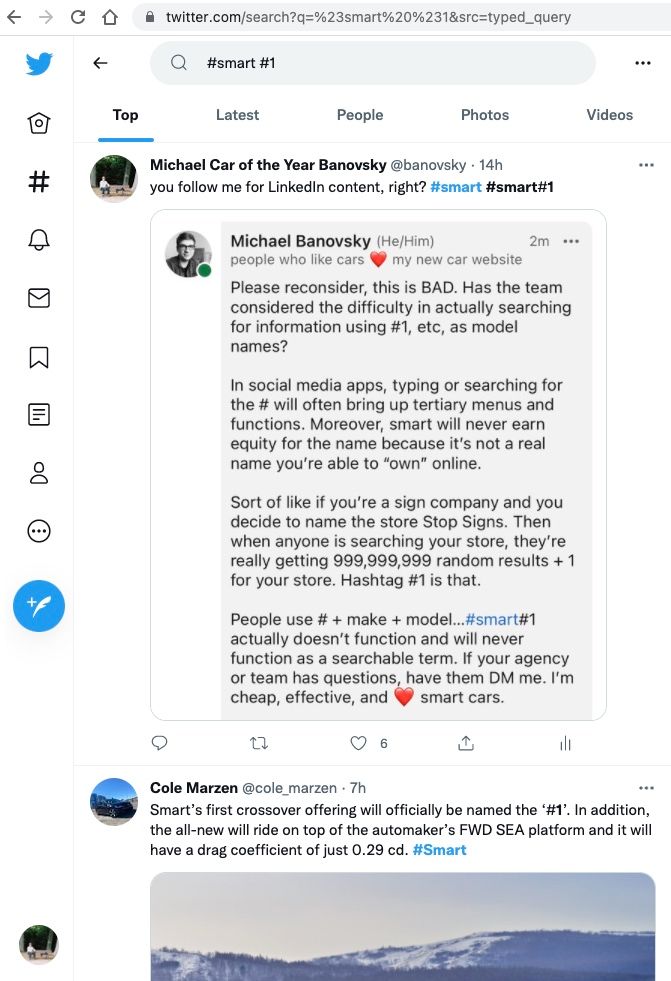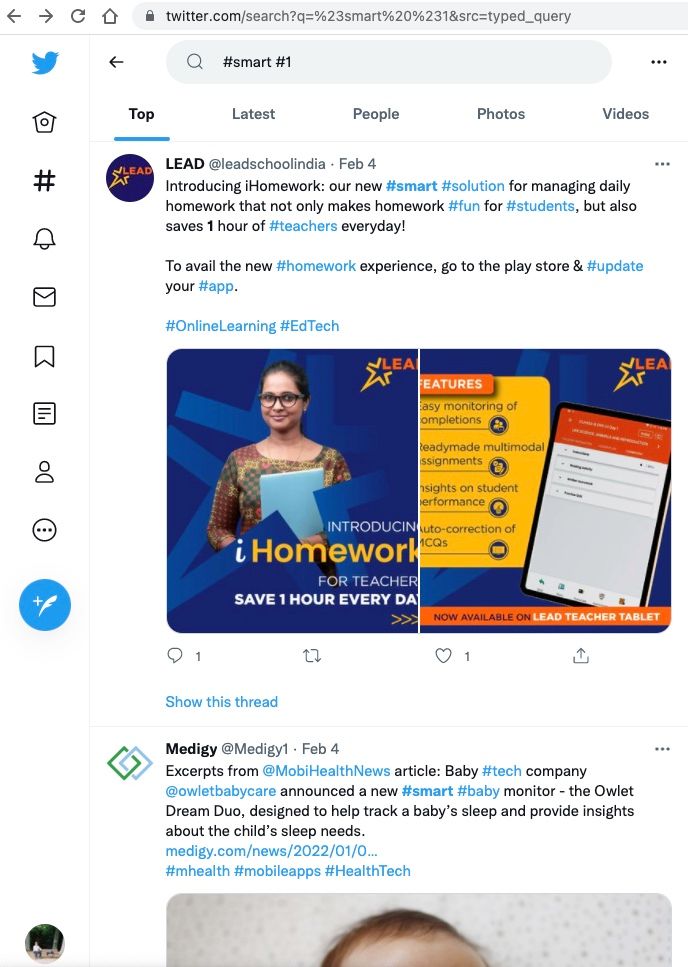This is about the # — the Octothorpe, number sign, pound (key), sharp, or hash. In marketing meetings and on social media, it denotes a hashtag. It’s also one of those pesky “special characters” that you’ve got to include in passwords.
Crucially, most software treats it differently from alphanumeric characters — 0-9 and A-Z. Differently?
Behind the scenes, it’s used in a lot of code and reserved for select functions. In URLs, for example, they’re used as fragments or for “hash bang” syntax (‘#!’) read by Google and other web crawlers. In Markdown, the technology behind this authoring system, putting a # in the wrong place can add a heading or affect where URLs point people.
Don't believe me? Next time you’re sending a bank transfer, add a #…anywhere…and see how that works for you. And so on.
As far as URLs are concerned, it’s not even #—our computers use %23.
Product names reflect on the company, not the product. You can name a vehicle 911, La Jamais Contente, Turbo Awesome World’s Best GT, smart #1, but those names are also products.
On social media platforms, typing only # will start to bring up possible hashtags, which we all know are informal ways to reference, talk about, share, and even use sarcastically.
No matter how determined a marketer you may be, you cannot escape certain laws of the universe: some characters are just born special.
#stillwithme? #no? #awesome!
“With combination of the “#” symbol followed by a number, smart has defined a recognizable family name for its new generation of all-electric vehicles.
“Now often used to indicate the hottest topics in social media, the “#” symbol is evocative of trendsetting in the digital era - fitting, because ever since its first production car unveiling at IAA in 1997, smart has been striving for innovation and remained a trendsetter in the automotive industry.”
– smart
Oh, you’re really doing this?
Let’s run through it together. You’re launching a new model to appeal to The Youths…sorry…trendsetters.
Put yourself in The Youths’ shoes. Maybe you even own a pair. Having just left an inspiring meeting about why the new smart car should be called the #1, you pick up your phone and begin to type:
#smart#1
Wait…which app are you using? Because it’s not going to give you the same results. So you enter them separately, with a space:
#smart #1
You’re on Instagram? Can’t search for two hashtags at the same time. Just #1? More than 100,000,000 posts. Sports, y’all.
Twitter?
Some use #smart sarcastically. #1 is too short—it must be two characters. Include a space between #smart and #1…it’s random junk. Remove the space before the second hashtag (as you can see in my picture, look at the URL, it searches correctly).


Point is, calling a vehicle smart 1 would be boring, but fine. As a hashtag, it’d likely be best as #smart1. So maybe rename the whole company #smart, yeah?
I’m both a former smart fortwo owner (which I loved) and current marketer.
Like many of you who are in writing, the creative fields, automotive industry, or marketing: I consider car names as a form of currency.
Product names reflect on the company, not the product. You can name a vehicle 911, La Jamais Contente, Turbo Awesome World’s Best GT, smart #1, but those names are also products.
They reflect the internal vision, planning, design, engineering, marketing and sheer struggle in creating a new anything.
As a marketer, what are your impressions of a team who comes up with the name #1? Do you think they’re all on the same page, excited to tell their family and friends they worked on that new “hashtag car”?
As a customer, do you feel like a trendsetter because # is in the name? I’d feel more than a bit embarrassed—I work with #, I don’t want to drive a #.
I write this with the deepest respect for those who worked on the naming process—naming products, especially vehicles, is notoriously difficult and full of hidden pitfalls. I also write this with respect to those who pour their heart and soul into products sunk by bad names and marketing.
I’d love for this new smart car, a compact electric hatchback, to succeed. I also want to jump on a Zoom call and pitch a few names of my own.
#whynot
sources: smart (release), oho.com (short explainer on # in URLs if you're unclear)
*Note: within an hour of this announcement and before writing this, I voiced my concerns semi-publicly to a high-ranking member of the smart team. I’ve withheld the name, but here’s what I shared in the moment.
you follow me for LinkedIn content, right? #smart #smart#1 pic.twitter.com/U4ONAjEQ1T
— Michael Car of the Year Banovsky (@banovsky) February 10, 2022










Member discussion